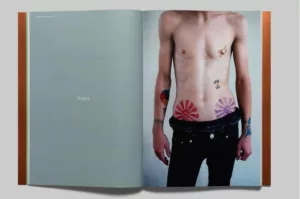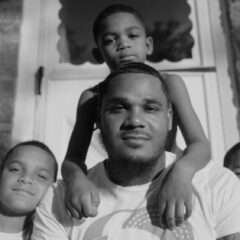Stanek Gallery’s first photography exhibition – People, Places & Things – curated by the legendary former Philadelphia gallerist Sande Webster-Brantley, features thirty-eight works by ten photographers, created between 1958 and 2017. Because there’s no theme to the show that I could discern, and the photographs are presented without commentary, the experience can leave the visitor somewhat adrift and, at times, jarred by transitions. Nevertheless, the drift is often remarkably engaging because the exhibit is filled with such powerful works. Wandering around the gallery, you might find yourself wondering where you are, but at the same time feeling quite glad to be there.
Traveling through time and geography in extraordinary images of humans
One moment, for instance, you might find yourself on the Mexican border in a brothel, and the next in Fadiouth, Senegal, or staring at a stately portrait of Jacob Lawrence. A few steps away from a photograph of a young Muhammad Ali with Stevie Wonder, you come upon another of a young Mick Jagger. There are abstracts in the show, portraits, candids, staged pieces a la Helmut Newton — the lot presented in a wide range of photographic media. Overall, the exhibition is filled with extraordinary work, besides the few that I will mention here.
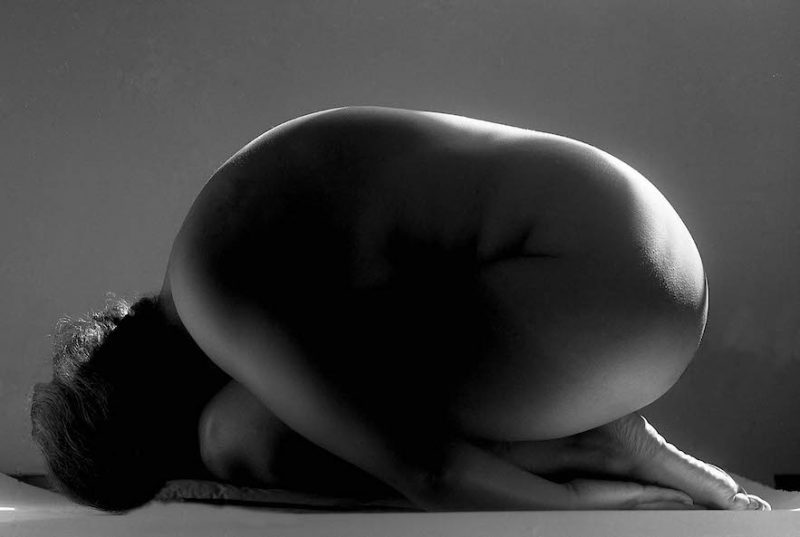
“Egg Nude,” by the eminent photographer and painter Adger Cowans, is a stunning, nearly-abstract depiction of human shape that reminds me of a holistic version of something that might have come from Man Ray or even Mapplethorpe. The composition of the photograph is exquisite, and the contrast in form between woman and egg may leave you pondering universal parallels between the two.
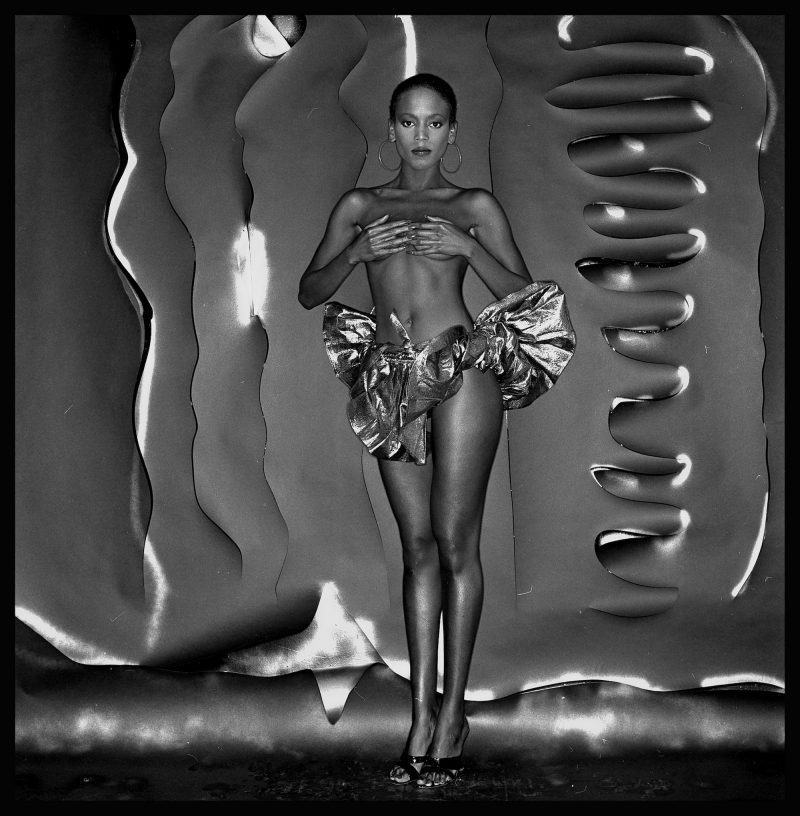
I want to mention another renowned master of the medium, Anthony Barboza. His “Toukie Smith, model,” like the work of Cowans mentioned above, creates, in a very different stylistic context, a striking blend of abstraction and figuration which beautifully reflects the human form.
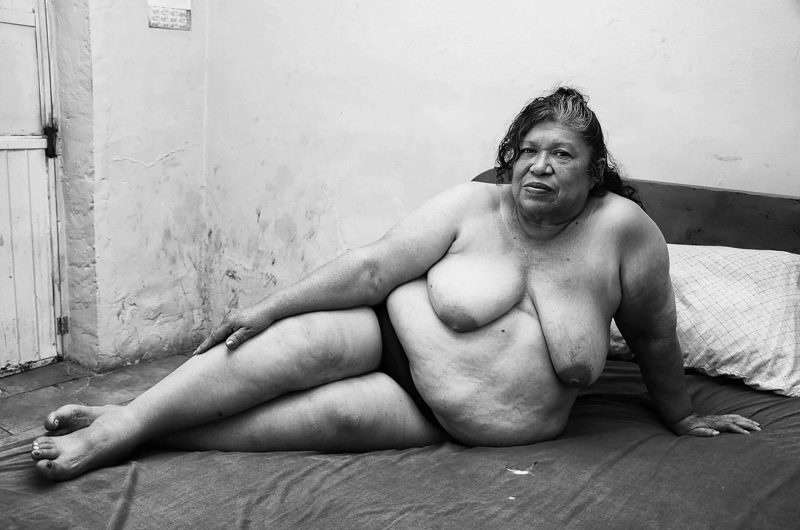
Ada Trillo is a Philadelphia-based artist and activist who has done a great deal of work to call attention to the fate of women trapped in the world of human trafficking and prostitution. Four of her photographs on the subject are included in this exhibition; she has also shown this body of work at Twenty-Two Gallery in 2017. While Trillo’s work can be disturbing, it also empowers by brilliantly capturing the ability of these women, who have suffered and been enslaved, to survive.
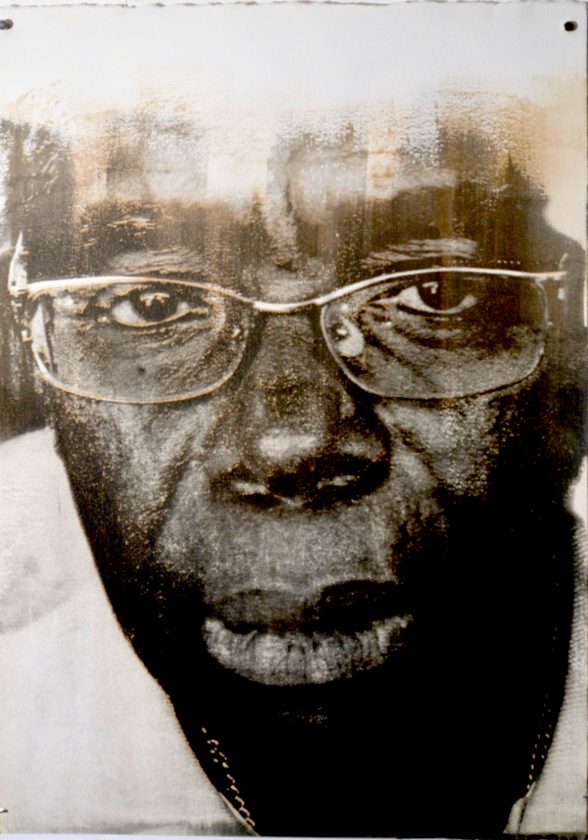
Finally, People, Places & Things includes a series of larger than life portraits of prominent men of color by Don Camp, now an Assistant Professor at Ursinus College. (Listen to our 2013 podcast interview with Camp.) Pictured are artists Robert Big Elk, John Dowell and David Bradley, and Congressman John Lewis. The humanity, dignity and severity of these portraits (unusual casein and earth pigment monoprints) is gripping, and emotionally I had a similar reaction to them as I had to Ada Trillo’s work. There’s also a chilling piece by Camp in the show which includes, among other images he appropriated from old newspapers, a photograph of Emmett Till together with an American flag. The work is printed on mirror so that viewers find themselves visible in the image. Camp and Till were the same age when Till was murdered in 1955, and the piece calls attention to issues of racial injustice which are, or should be, relevant to us all in today’s political environment.
Profound and overlooked histories
Most of the artists, as well as the subjects, featured in People, Places & Things are people of color. Walking through the exhibition, one gets a sense of profound histories that have been overlooked — of untold life stories.
Generations of Black communities have relied upon the accessible medium of photography, outside of the racist art establishment from which they were historically excluded, to memorialize and document the narratives of their lives. The recognition of this work by local institutions such as the Woodmere Art Museum and the African American Museum in Philadelphia, as well as by other institutions nationally, is significant, and one hopes that it is only a beginning. Great credit, therefore, to the Stanek Gallery and to curator Sande Webster-Brantley for showcasing the talented photographers and their impressive work in People, Places & Things.
While the work very much stands on its own, as a visitor, it makes you want to learn more. One way to accomplish that, incidentally, is to view a video about the exhibition produced by John Thornton, who makes short films about art and artists, and who does so with charm and keen intelligence.
People, Places & Things runs through May 26 at Stanek Gallery. Photographs on view are by Don Camp, Anthony Barboza, Arlene Love, Ada Trillo, Ron Tarver, Adger Cowans, Robert Reinhardt, Tony Ward, Willie Williams, and Andrea Baldeck. For more information, visit the Stanek Gallery website.




